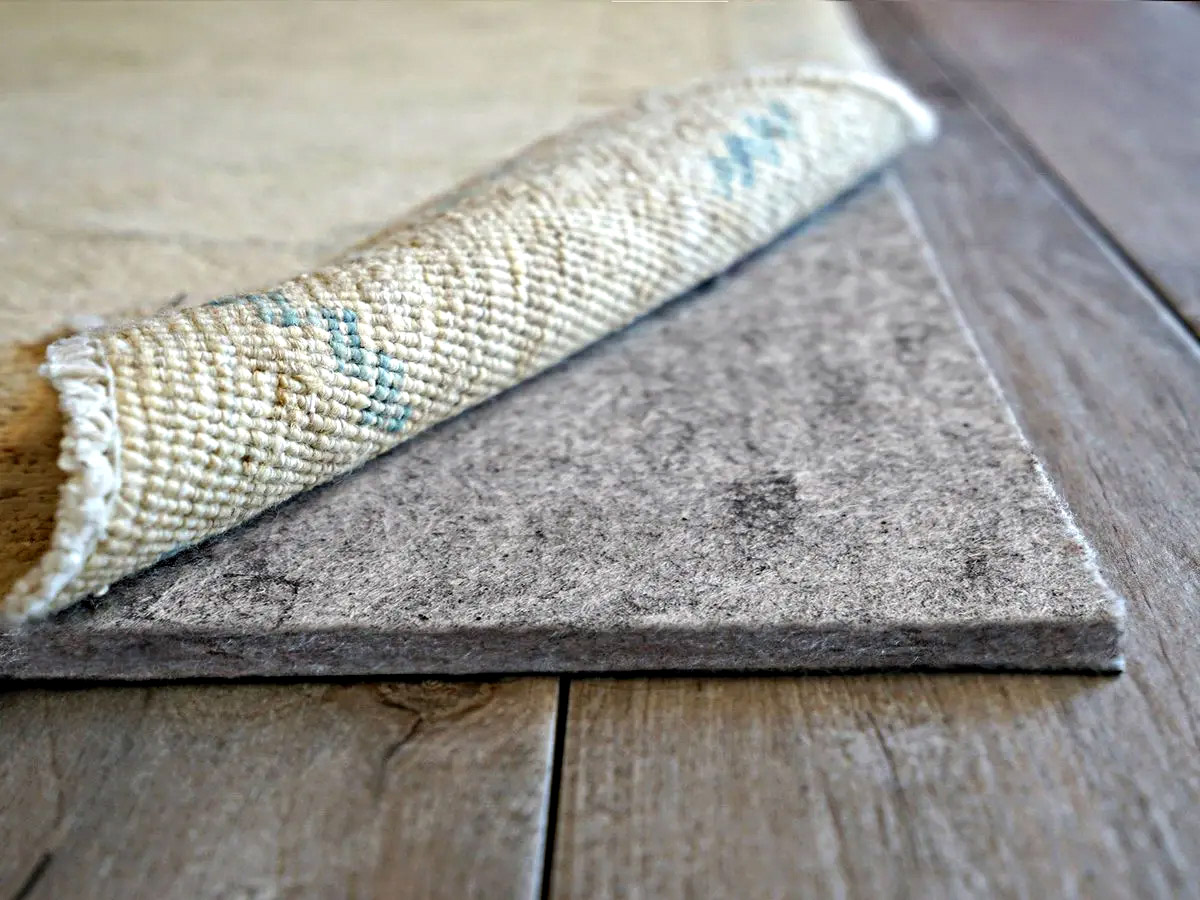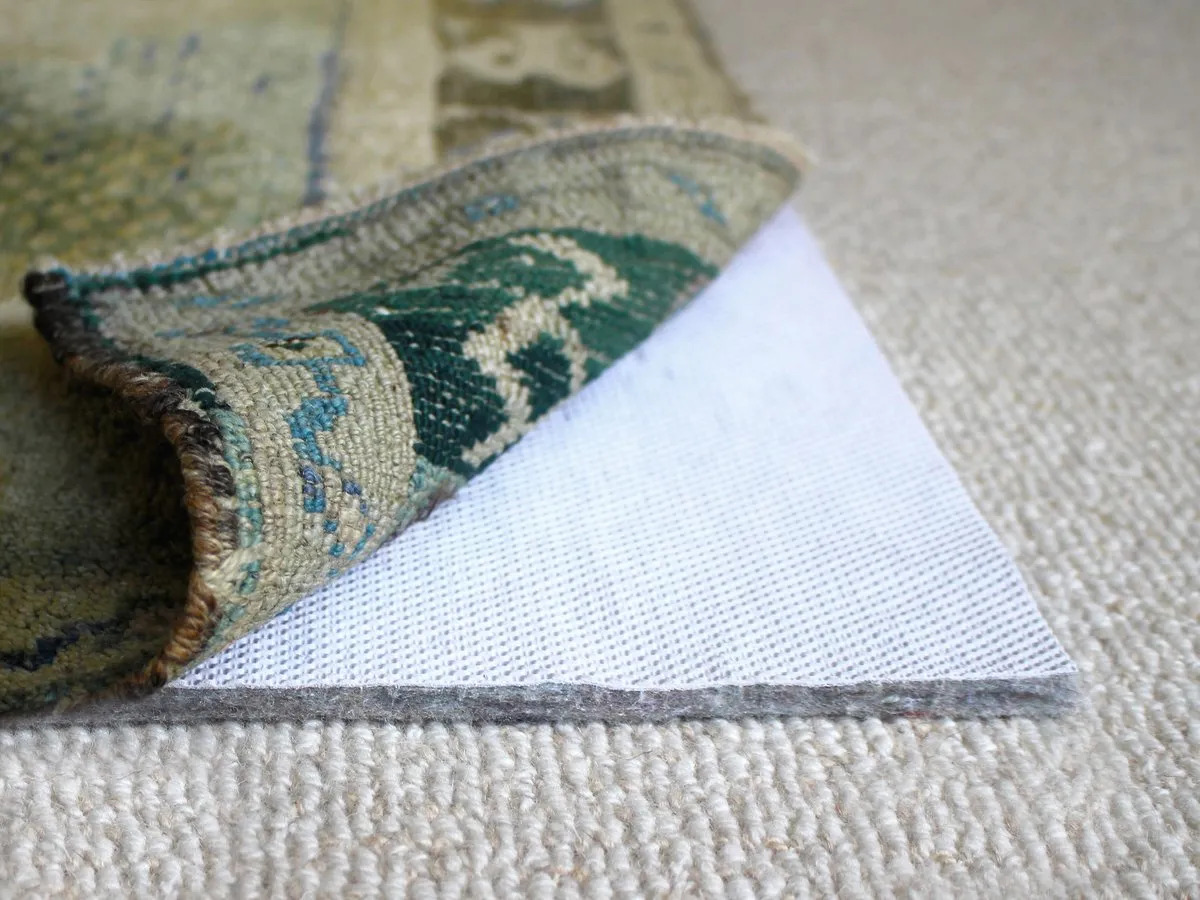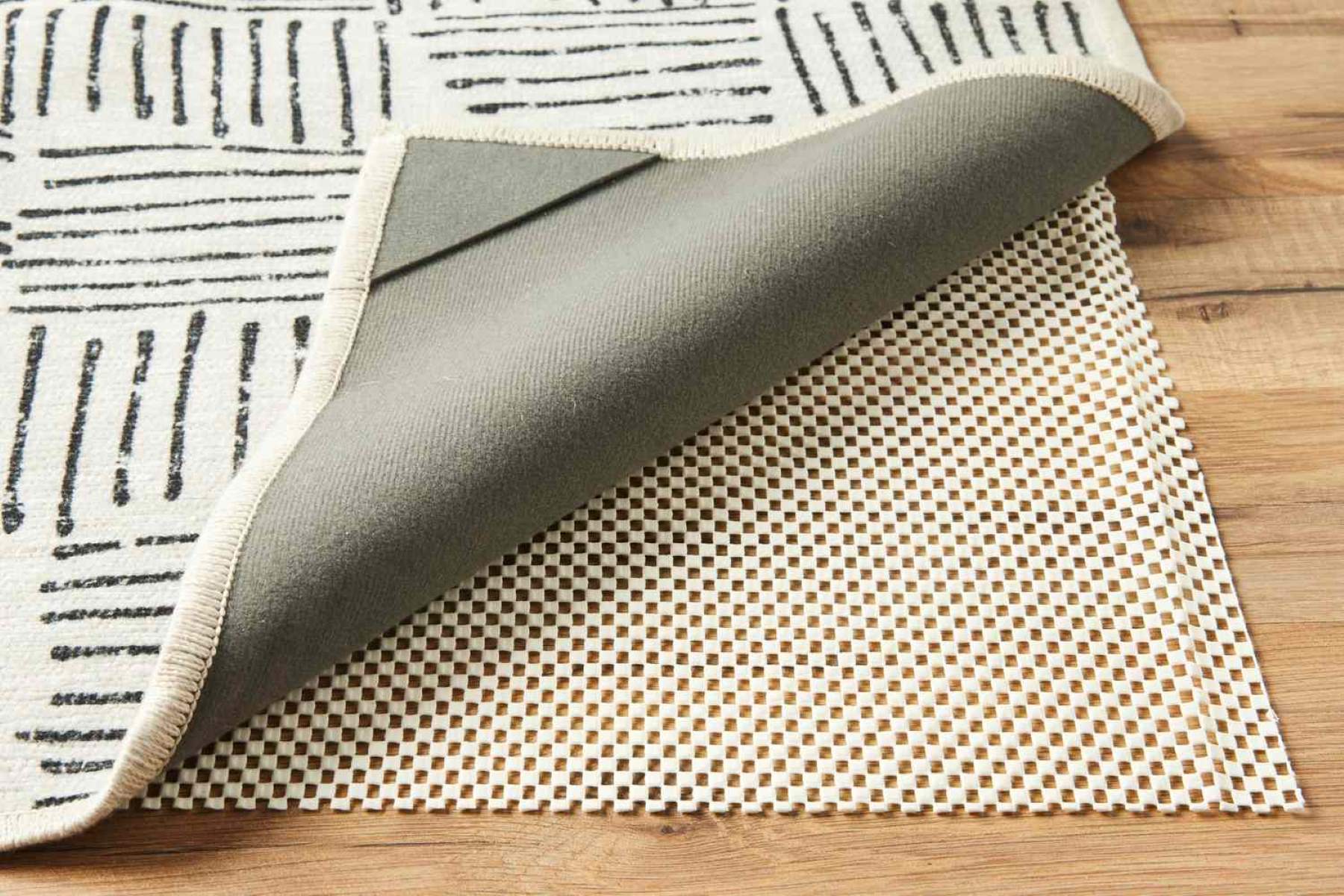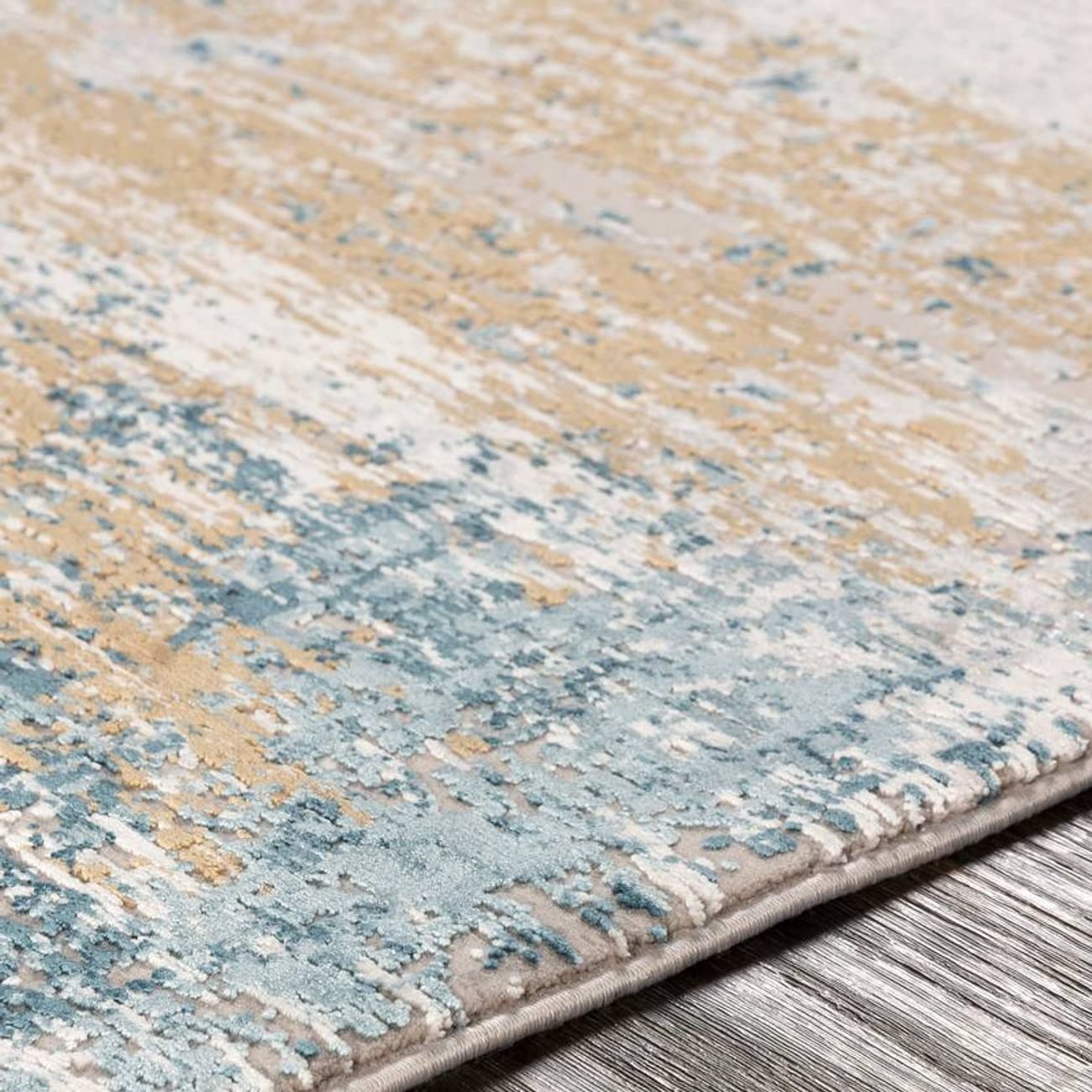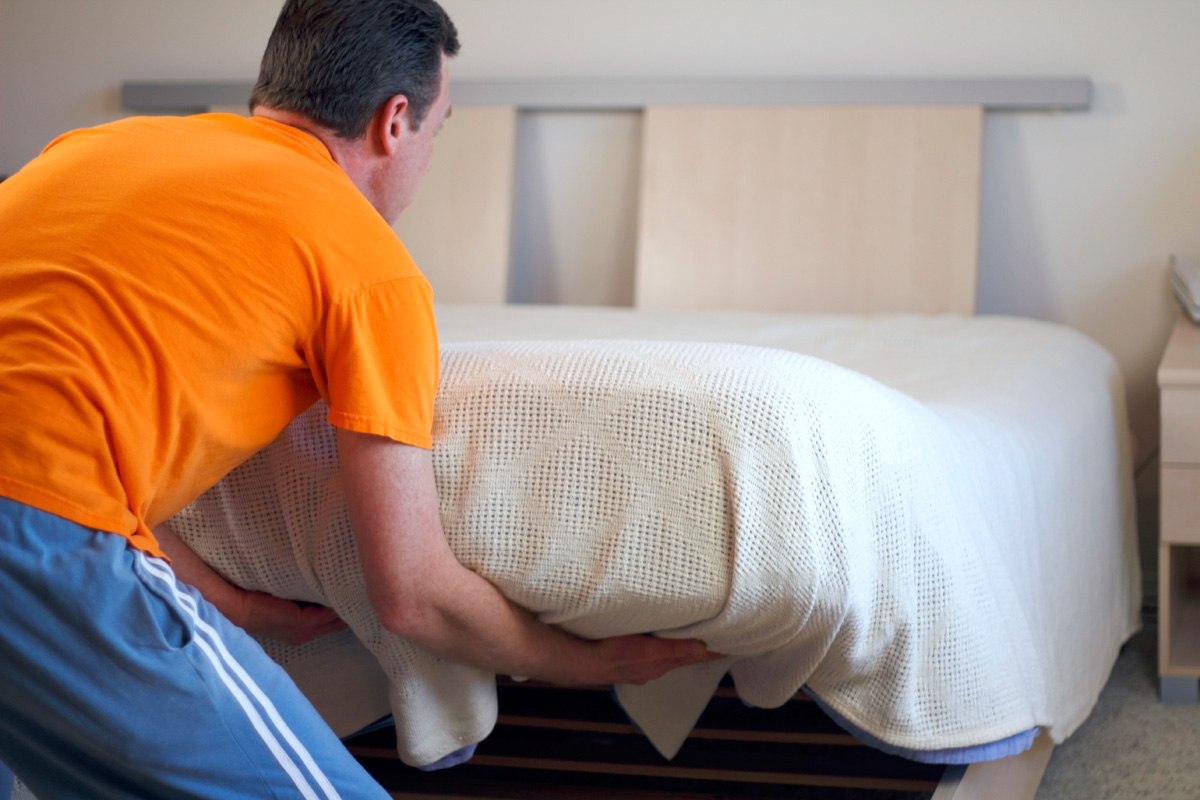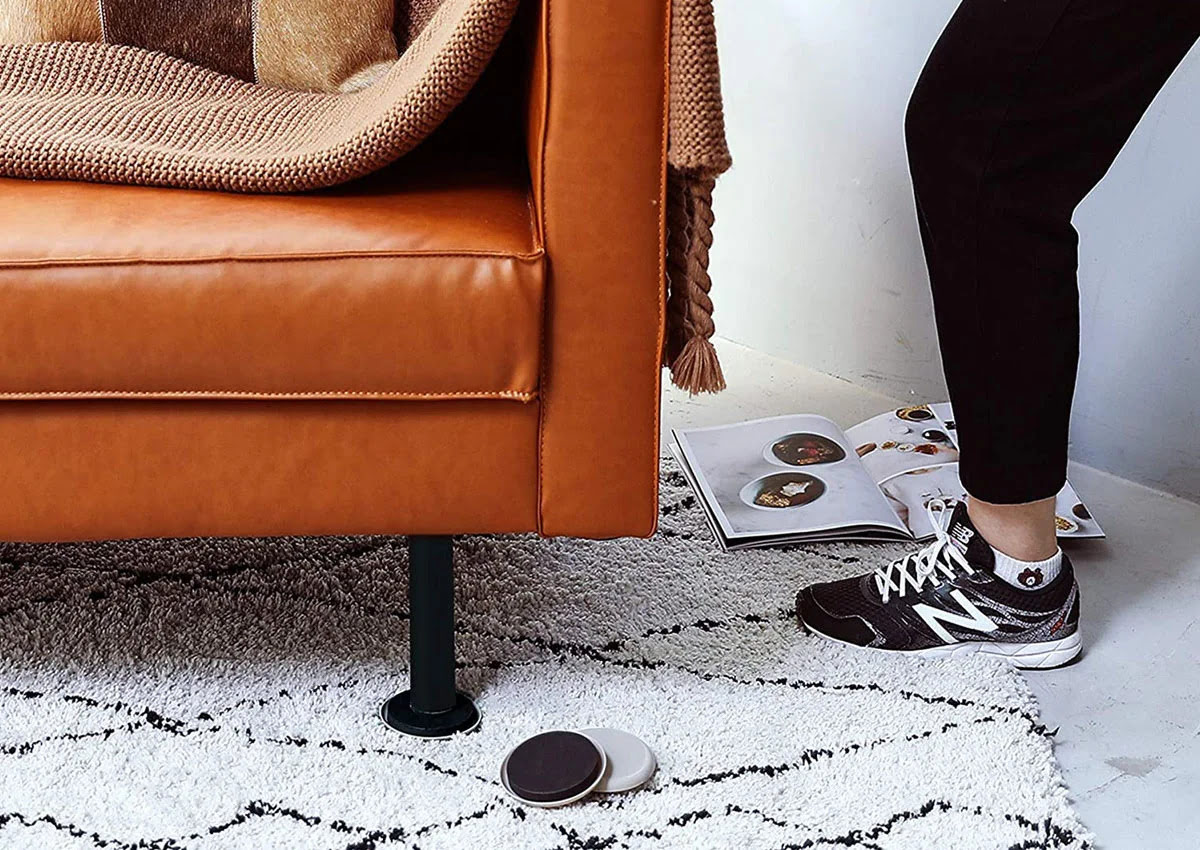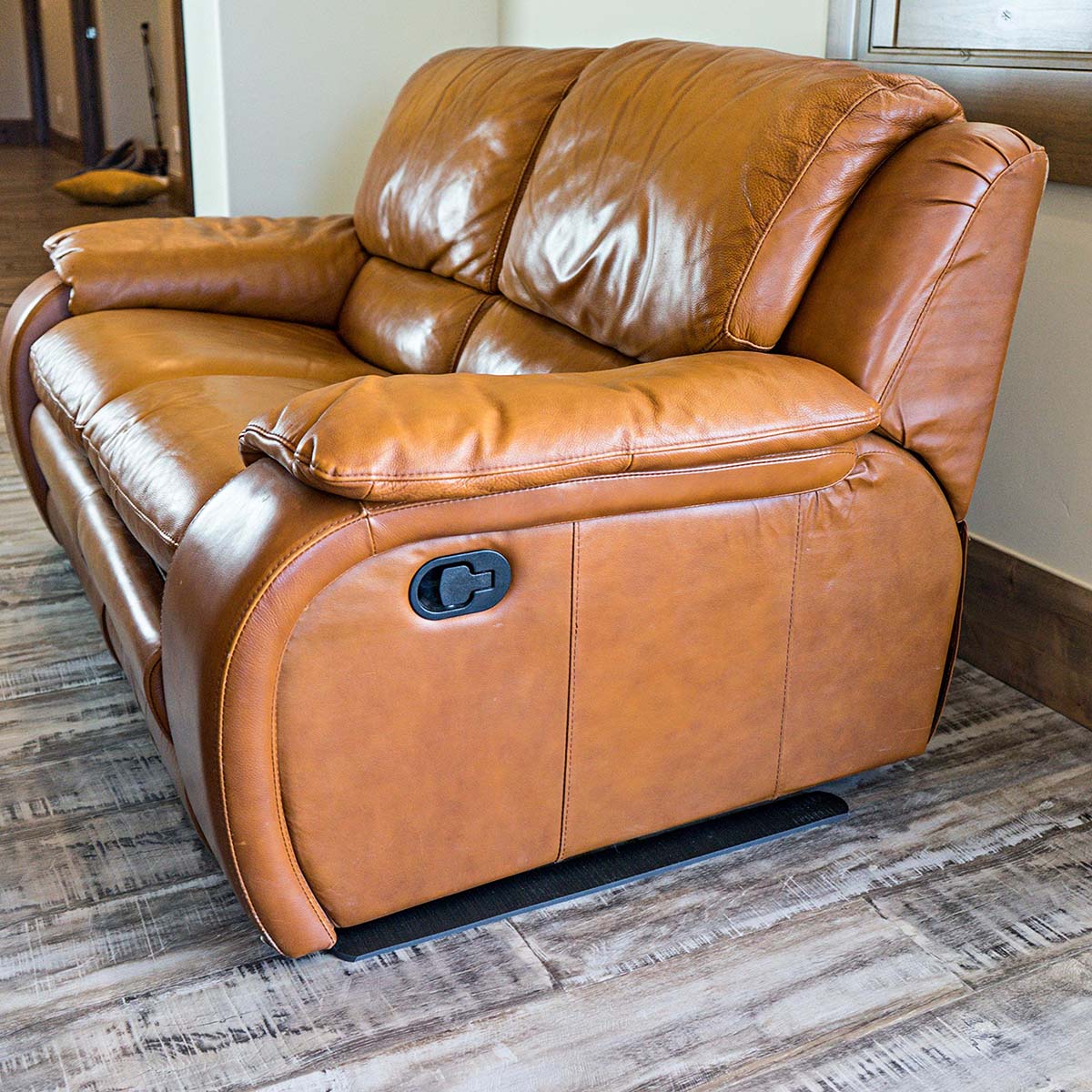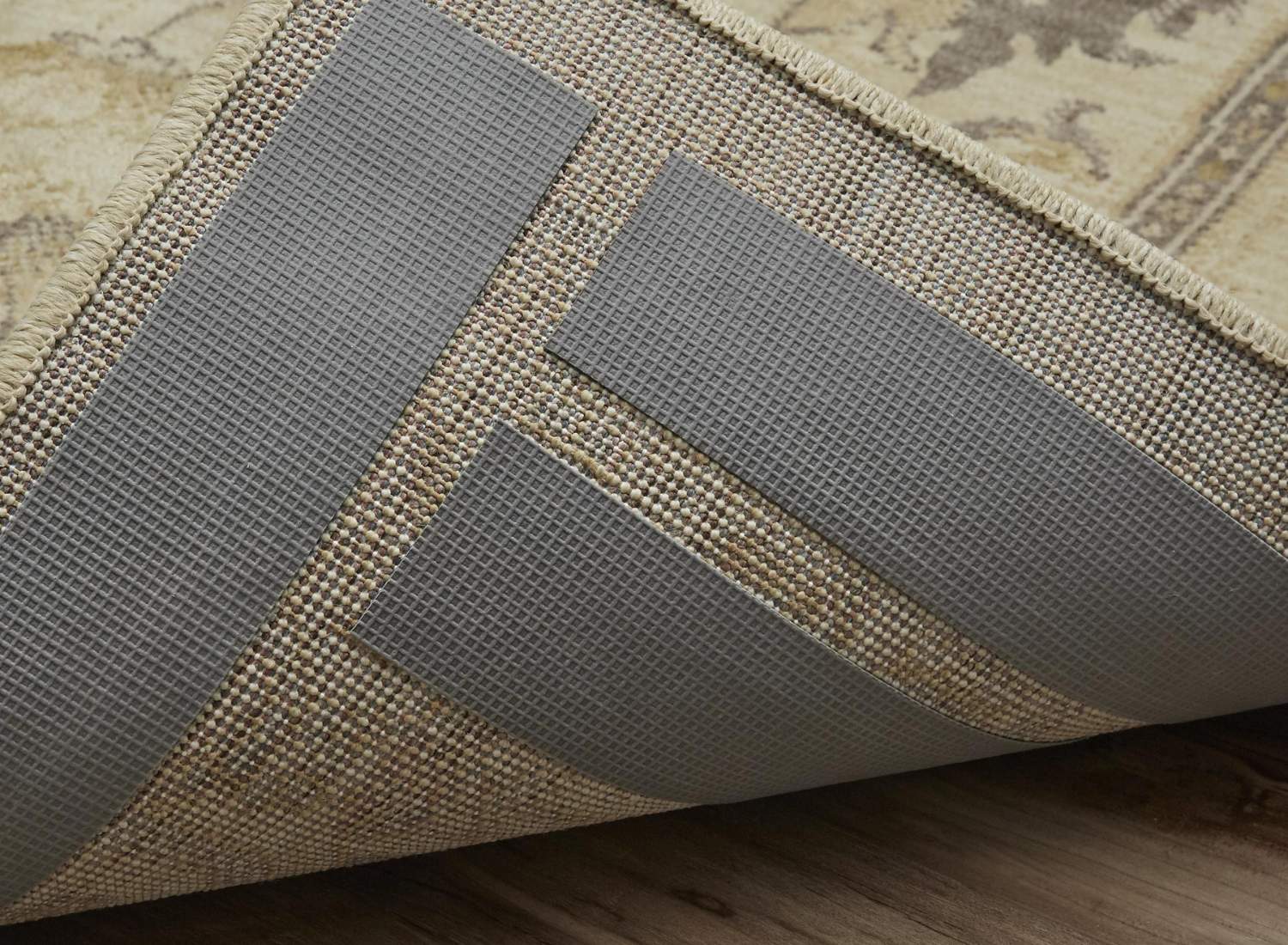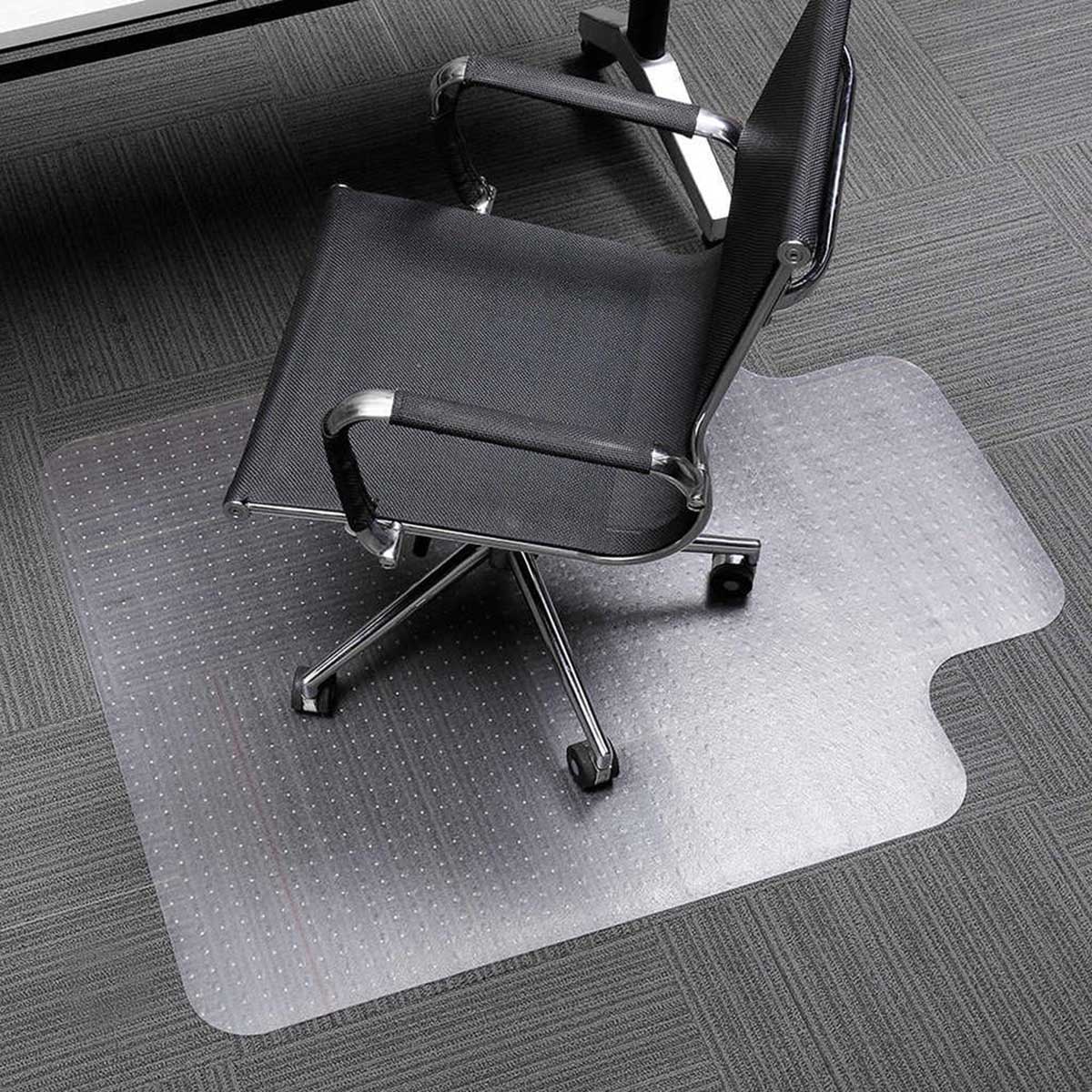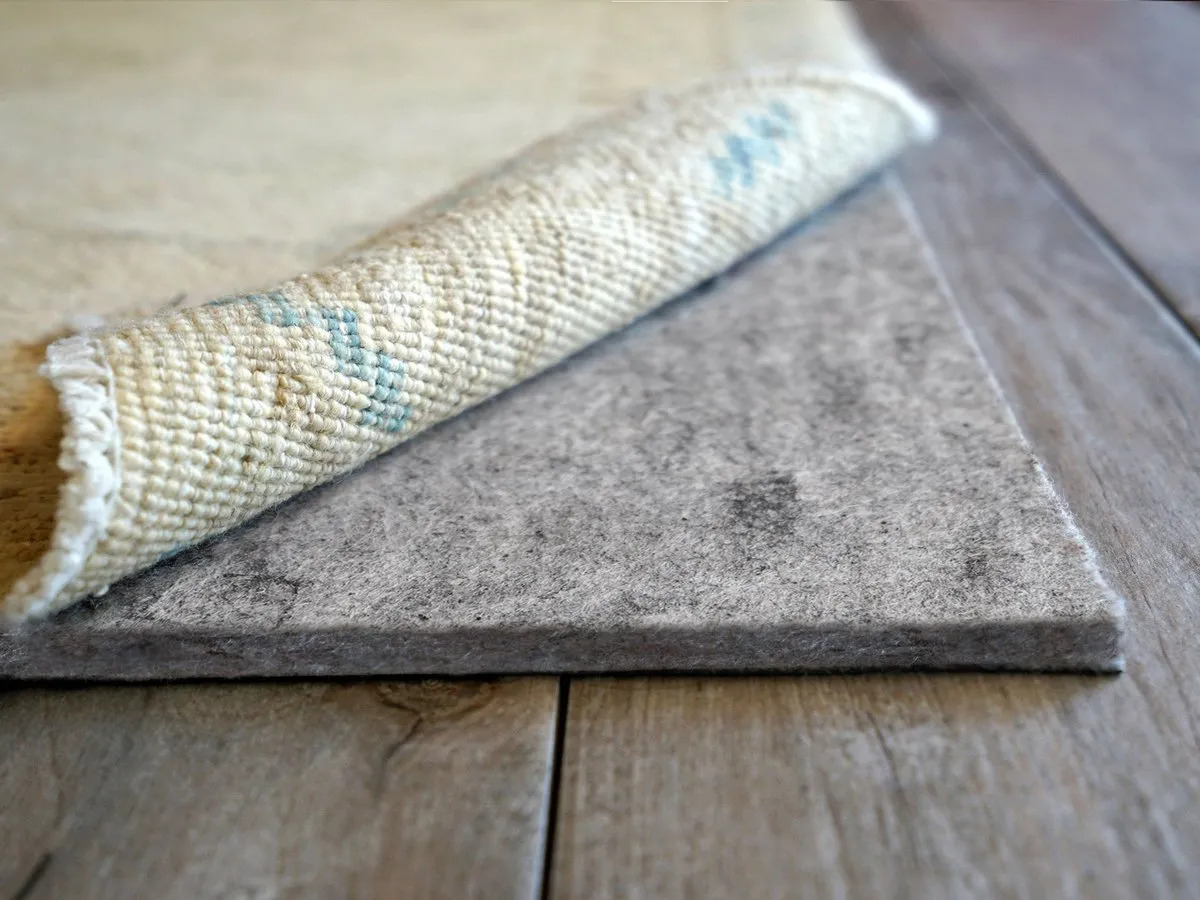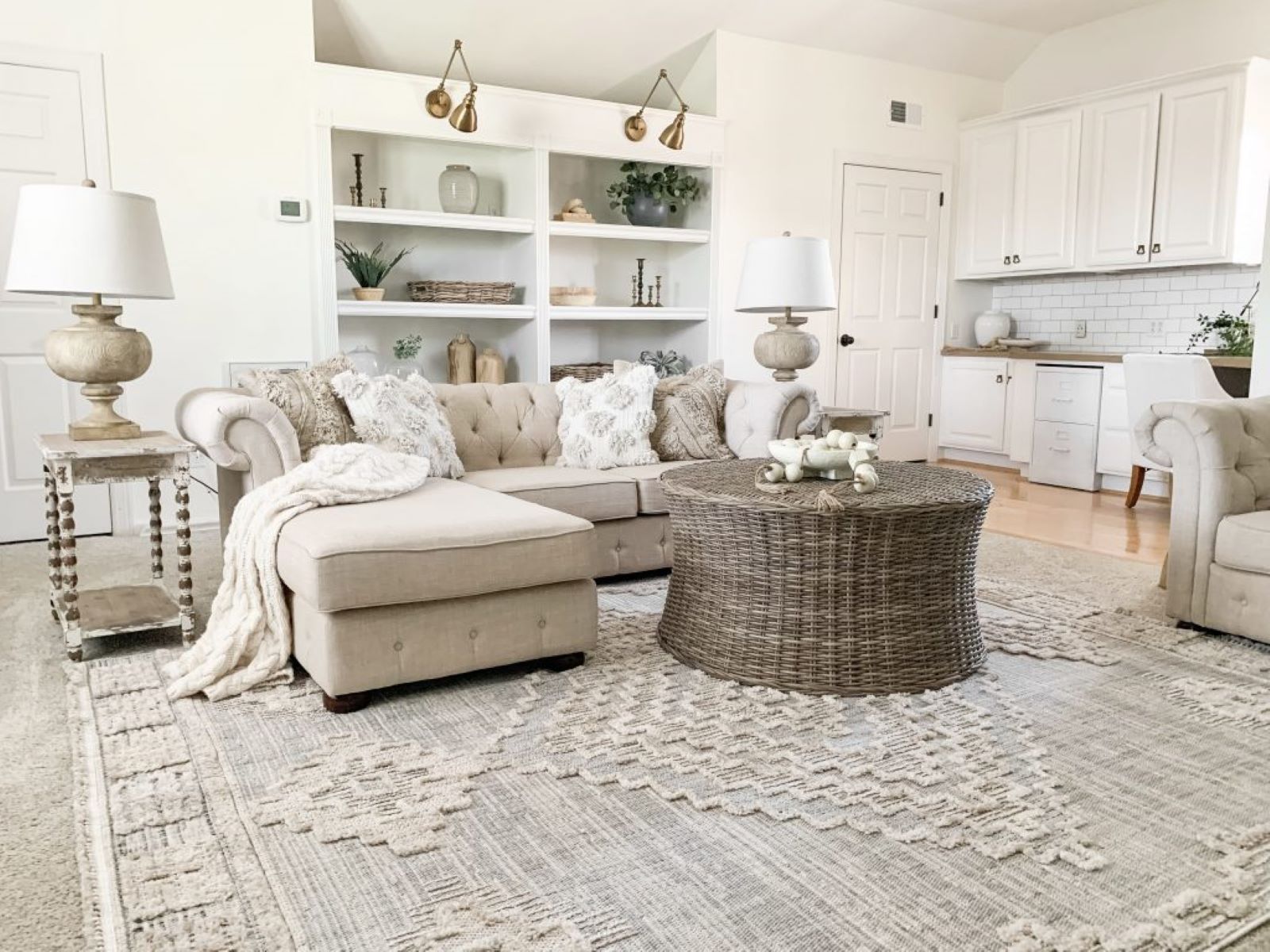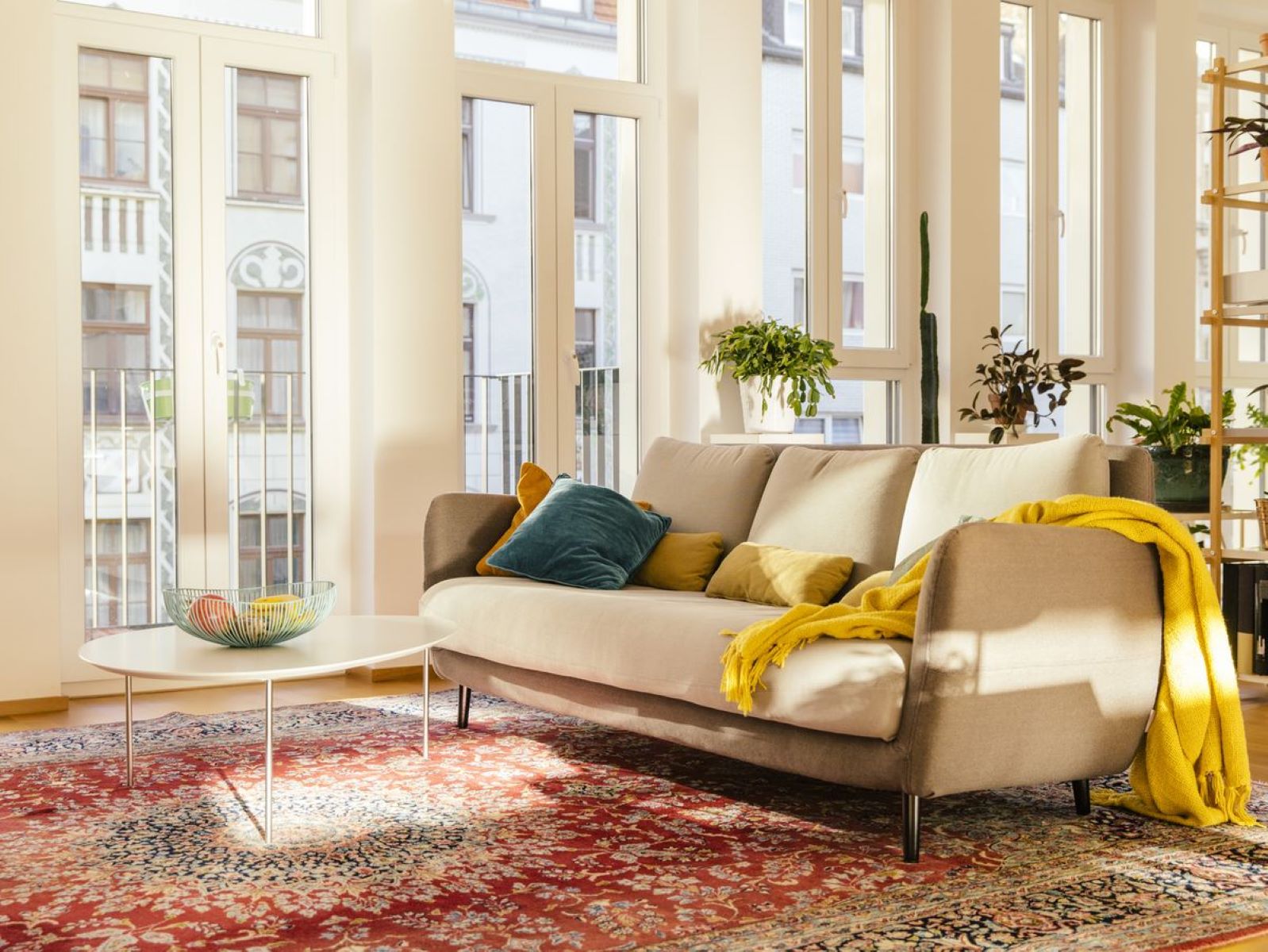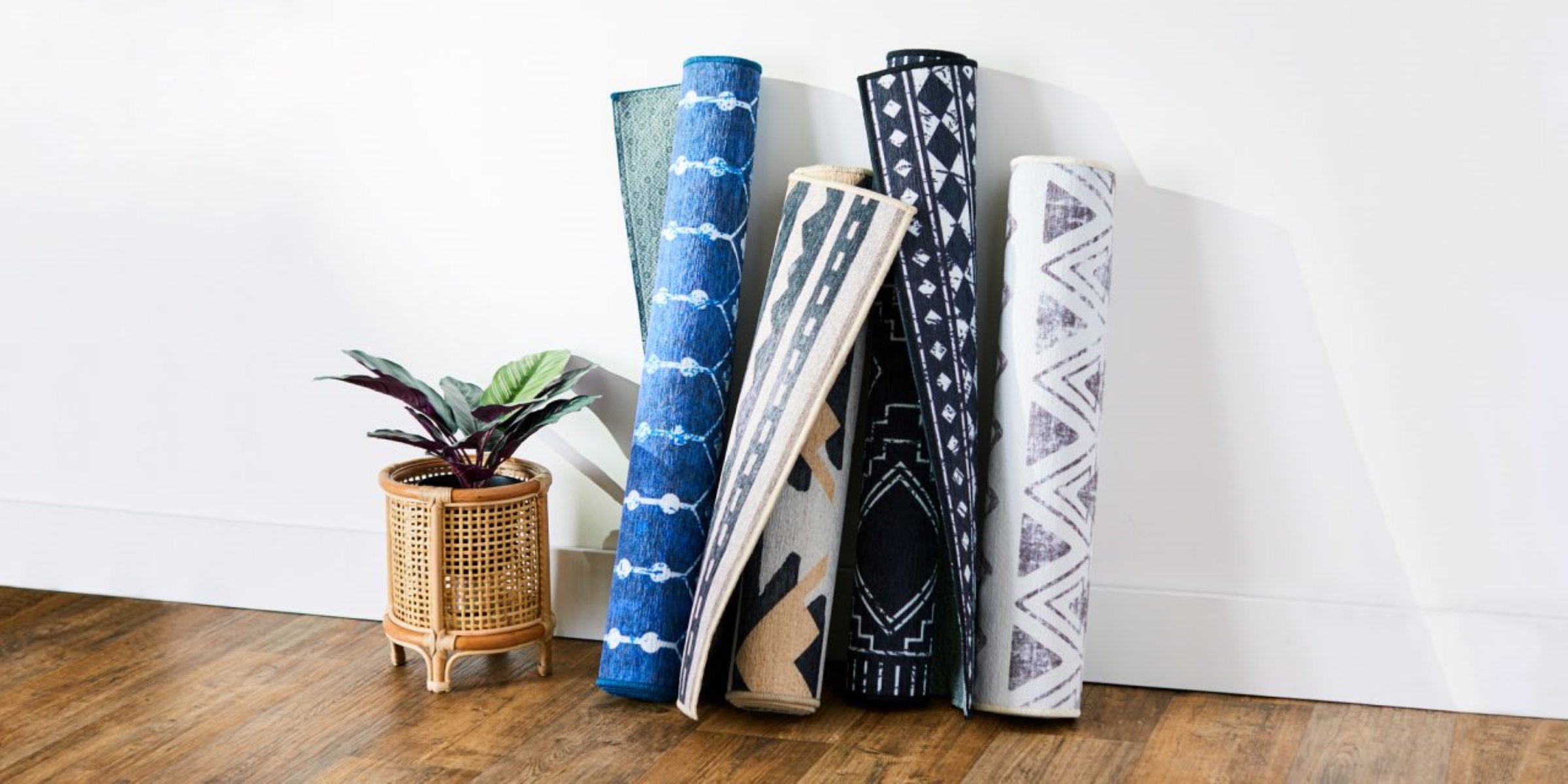Home>Articles>How To Prevent An Area Rug From Moving On A Carpet
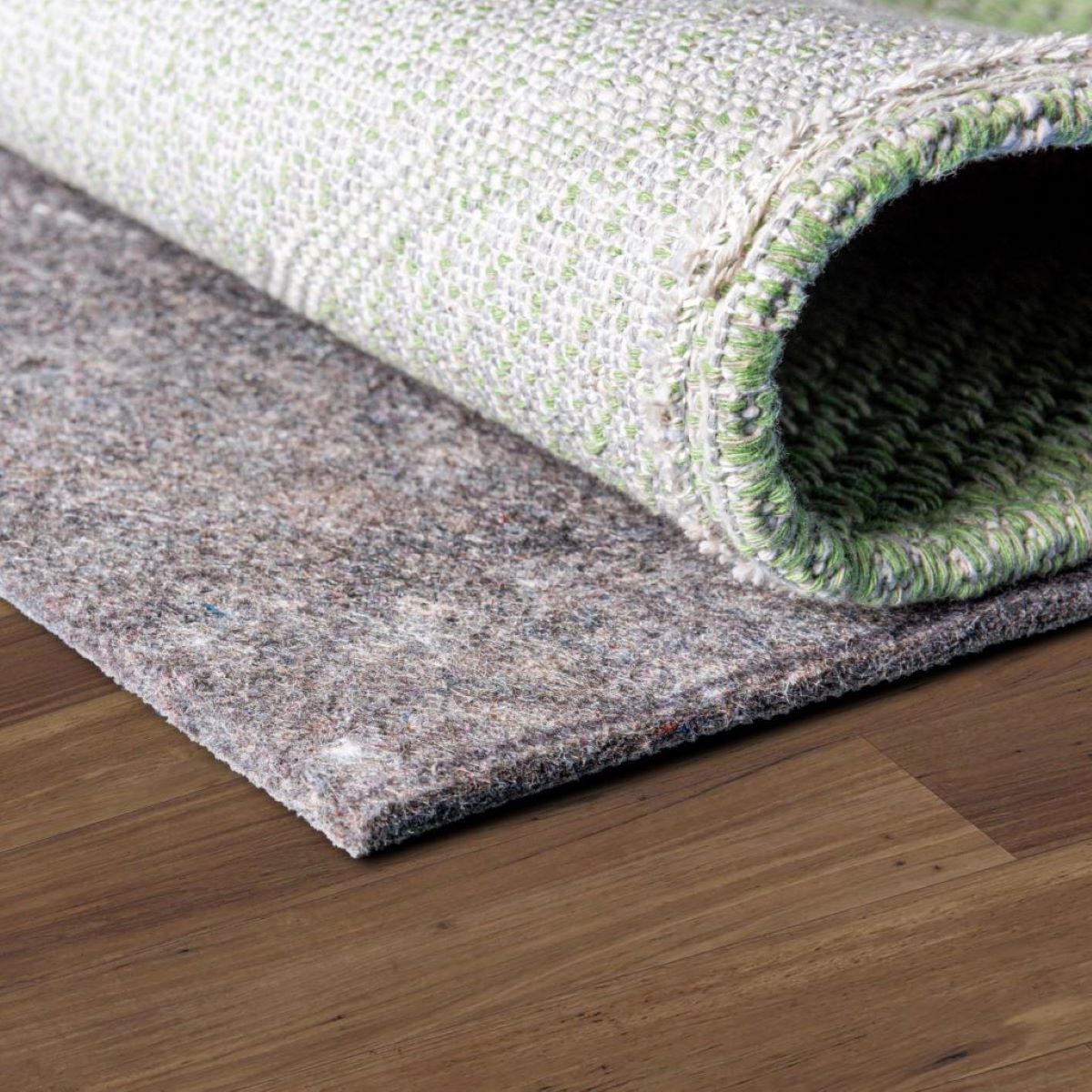

Articles
How To Prevent An Area Rug From Moving On A Carpet
Modified: October 28, 2024
Learn effective ways to prevent your area rug from shifting and sliding on your carpet with these helpful articles.
(Many of the links in this article redirect to a specific reviewed product. Your purchase of these products through affiliate links helps to generate commission for Storables.com, at no extra cost. Learn more)
Introduction
Area rugs are a popular choice for adding warmth, comfort, and style to a room. Whether you have a plush rug, a patterned rug, or a sisal rug, you want it to stay in place on your carpeted floor. Unfortunately, rugs tend to shift and move easily, causing frustration and potential safety hazards.
If you have ever tripped over a rug that has slipped out of place, you understand the need for finding a solution to keep it in position. The good news is that there are several effective methods to prevent an area rug from moving on a carpet, allowing you to enjoy your rugs without the constant need for readjustment.
In this article, we will explore the underlying problem of rug movement, the common causes, and a variety of methods to keep your area rug firmly in place on your carpeted floor. By understanding the root causes and implementing preventative measures, you can ensure that your area rug stays in its intended position and enhances the overall look and functionality of your space.
Key Takeaways:
- Keep your area rug in place on a carpeted floor by using rug grippers, double-sided carpet tape, or heavy furniture placement. These simple and effective methods provide stability and prevent slippage, enhancing the safety and comfort of your living space.
- Consider professional carpet installation for a long-term solution to prevent rug movement. Expert assessment, proper padding, and secure installation ensure that your area rug stays securely anchored, eliminating the need for constant readjustment and enhancing the aesthetics and functionality of your space.
Read more: How To Prevent Carpet Runners From Moving
Understanding the Problem
The problem of area rugs moving on a carpeted floor is a common issue faced by many homeowners. It can be frustrating to constantly adjust and reposition your rug, not to mention the potential hazards of tripping or slipping. Therefore, it’s essential to understand why this problem occurs in the first place.
One of the primary reasons for rug movement is the lack of friction between the rug and the carpet. When you step on a rug, the force can cause it to slide in the direction of your movement. This lack of grip is exacerbated by factors such as foot traffic, pets, vacuuming, and even the rug’s weight and size. Additionally, thinner rugs or those with smooth backings are more prone to slippage.
The pile direction of the carpet can also impact rug movement. If the carpet fibers are oriented in the same direction as your rug, it creates less friction and allows the rug to move more easily. Rooms with heavy foot traffic or where people tend to change directions frequently, such as hallways or entryways, are more susceptible to rug slippage.
Another factor to consider is the presence of padding or underlay beneath the carpet and rug. While carpet padding provides cushioning and insulation, it can also contribute to rug movement if it is not properly secured or if the rug is not adequately anchored to it. The padding acts as a slippery surface that allows the rug to slide.
Understanding these underlying factors is crucial for effectively addressing the problem of rug movement. By considering these causes, you can implement appropriate preventative measures to keep your area rug firmly in place on your carpeted floor.
Determining the Cause
Before finding a solution to prevent your area rug from moving on a carpet, it’s important to determine the specific cause of the problem. By identifying the root cause, you can implement targeted strategies to address it.
Here are some common causes of rug movement on a carpet:
- Lack of friction: Insufficient friction between the rug and carpet is one of the primary causes of slippage. This can be due to factors such as the materials and construction of the rug, the pile direction of the carpet, or the use of inadequate rug pads or underlay.
- Foot traffic: Areas with high foot traffic tend to have more rug movement. Frequent walking or running on the rug can gradually shift its position over time.
- Inadequate anchoring: If the rug is not properly anchored or secured to the carpet or the underlying padding, it is more likely to move. This can occur if the rug is too small for the carpeted area or if there is no grip between the two surfaces.
- Smooth rug backing: Rugs with a smooth or slippery backing have less traction on the carpet, increasing the chances of slippage.
- Incorrect padding: If the padding underneath the carpet is not of the proper type or if it is worn out or improperly installed, it can contribute to rug movement.
By carefully assessing your specific situation and considering these potential causes, you can determine which factors are contributing to your rug’s movement. This knowledge will guide you in selecting the most appropriate methods to prevent your area rug from shifting on the carpet.
Methods to Prevent an Area Rug from Moving on a Carpet
Fortunately, there are several effective methods to prevent your area rug from moving on a carpeted floor. These methods range from simple DIY solutions to professional installations. By implementing one or more of these techniques, you can keep your rug securely in place and enjoy a safer, more comfortable living environment.
- Using Rug Grippers or Non-Slip Rug Pads: Rug grippers or non-slip rug pads are specially designed to provide traction and grip between your rug and the carpet. These pads typically have a textured or rubberized surface that prevents your rug from sliding. They are available in various sizes and can easily be trimmed to fit your rug.
- Double-Sided Carpet Tape: Double-sided carpet tape is another effective method to keep your area rug from moving. Simply apply strips of carpet tape along the edges and under the corners of the rug, adhering it to the carpeted floor. This will provide a strong bond and prevent slippage.
- Heavy Furniture Placement: Strategically placing heavy furniture on the corners or edges of your rug can help anchor it in place. The weight of the furniture creates friction and prevents the rug from shifting. However, ensure that the furniture is not damaging the rug fibers.
- Velcro Strips: Velcro strips can be attached to both the rug and the carpet to create a secure bond. Apply one side of the Velcro strip to the corners or edges of the rug and the other side to the corresponding areas of the carpet. Press them together firmly to ensure a strong grip.
- Silicone Caulk or Adhesive: Applying a thin line or dots of silicone caulk or adhesive on the underside of your rug can increase friction and prevent slippage. This method is particularly useful for rugs with a smooth backing.
- Hook and Loop Fasteners: Hook and loop fasteners, commonly known as Velcro, can be sewn onto the edges of your rug and attached to a Velcro strip affixed to the carpet. This provides a secure bond and prevents the rug from moving.
- Tacking or Nailing the Rug: For a more permanent solution, you can use tacks or small nails to secure the edges of the rug to the carpet. However, exercise caution to avoid damaging the carpet fibers or causing injuries when walking barefoot.
- Professional Carpet Installation: If your rug movement problem persists or if you require a more extensive solution, consider consulting a professional carpet installer. They can assess the situation and provide expert advice and assistance, such as using specialized adhesives or installing carpet gripper strips.
Remember to consider the size, type, and material of your rug when selecting the most suitable method for your specific situation. Experiment with different techniques to find the one that offers the best grip and stability for your area rug.
Using Rug Grippers or Non-Slip Rug Pads
Rug grippers or non-slip rug pads are highly effective tools to prevent your area rug from moving on a carpeted floor. These products are designed to provide traction and grip, ensuring that your rug stays firmly in place.
Rug grippers and non-slip rug pads are available in a variety of materials, including rubber, felt, and PVC. They typically have a textured or rubberized surface that enhances friction between the rug and the carpet, preventing slippage.
To use rug grippers or non-slip rug pads, follow these steps:
- Measure and Trim: Measure your rug and the area where you want to place it. Cut the rug gripper or non-slip pad slightly smaller than the rug to ensure it remains discreet.
- Position: Lay the rug gripper or non-slip pad on the carpeted floor, aligning it with the edges of the rug. Make sure it is centered properly.
- Place Rug: Carefully lay the rug on top of the gripper or pad, ensuring that it is centered and matches the desired placement.
- Press Firmly: Use your hands or feet to apply even pressure across the entire surface of the rug. This will help the rug gripper or non-slip pad adhere to the carpet and create a strong grip.
Rug grippers and non-slip rug pads are versatile solutions that work well for various types of rugs, including area rugs, runners, and smaller mats. They are also easily removable and reusable, allowing you to reposition or clean your rug without hassle.
When choosing a rug gripper or non-slip rug pad, consider the thickness and material of your rug. Opt for a pad that provides ample cushioning and grip without being too bulky. Be sure to select a pad specifically designed for use on carpeted floors to ensure optimal performance.
With rug grippers or non-slip rug pads, you can enjoy the benefits of your area rug without worrying about constant readjustments. These simple yet effective products provide a practical and affordable solution to prevent rug movement on carpeted surfaces.
Read more: How To Keep Rugs From Moving On Carpet
Double-Sided Carpet Tape
Double-sided carpet tape is a powerful adhesive solution that can help you keep your area rug securely in place on carpeted floors. It provides a strong and reliable bond between the rug and the carpet, preventing any movement or slipping.
To use double-sided carpet tape, follow these steps:
- Clean the Surface: Ensure that both the carpet and the underside of the rug are clean and free of dust or debris. This will help the tape adhere better and create a stronger bond.
- Cut the Tape: Measure and cut the double-sided carpet tape into strips that are slightly smaller than the width or length of your rug. You can use a pair of scissors or a utility knife for this.
- Attach the Tape: Peel off the backing from one side of the tape and place it along the edges and under the corners of the rug, adhering it to the carpeted floor. Press firmly to ensure a strong bond.
- Position the Rug: Carefully position the rug on top of the tape, ensuring that it aligns properly with the desired placement. Smooth out any wrinkles or bumps in the rug’s surface.
- Press Firmly: Apply even pressure across the entire surface of the rug to ensure maximum adhesion. You can use your hands or a clean, flat object, like a book or a rolling pin, to press down firmly.
Double-sided carpet tape offers a secure and long-lasting solution for preventing rug movement on carpeted floors. It is particularly useful for larger or heavier rugs that are more prone to shifting. Plus, it can withstand foot traffic, vacuuming, and other daily activities without losing its grip.
When using double-sided carpet tape, it’s important to choose a high-quality tape specifically designed for use on carpets. Look for tapes that are durable, moisture-resistant, and easy to remove without leaving residue or damaging the carpet or the rug.
While double-sided carpet tape provides a strong adhesive bond, it is important to note that it may leave a residue on the carpet or the rug when removed. To mitigate this, you can use a solvent or adhesive remover to gently clean the affected areas.
By utilizing double-sided carpet tape, you can ensure that your area rug stays securely in place on your carpeted floor, providing a stable and comfortable environment for your home.
Heavy Furniture Placement
If you’re looking for a simple and cost-effective way to prevent your area rug from moving on a carpeted floor, strategically placing heavy furniture can be a great solution. This method relies on the weight of the furniture to anchor the rug in place, creating friction and minimizing the chances of slippage.
Here’s how you can use heavy furniture placement to keep your area rug secure:
- Identify the Rug Placement: Determine the desired location of your rug. Make sure it is properly centered and aligned with the surrounding furniture and room layout.
- Choose Suitable Furniture: Select heavy furniture pieces that you can position on the corners or edges of the rug. Examples of suitable furniture include sofas, sectionals, dining tables, bookshelves, or bed frames.
- Position the Furniture: Carefully move the selected furniture pieces onto the rug, ensuring that the weight is evenly distributed. Place them near the corners or edges of the rug to provide maximum stability.
- Adjust Placement: Once the furniture is in position, check if the rug stays securely in place. If needed, you can slightly adjust the furniture to create better contact between the rug and the floor.
When using heavy furniture placement to prevent rug movement, it’s important to consider the size and weight of the furniture in relation to the rug. Using furniture that is too large or too heavy for the rug may cause damage or stress to the rug fibers.
Additionally, keep in mind that this method may limit your flexibility in rearranging the furniture or changing the rug’s position. If you frequently rearrange your furniture, this may not be the most ideal solution for you.
You can also combine the heavy furniture placement method with other techniques, such as rug grippers or non-slip rug pads, for enhanced stability and increased effectiveness.
By strategically placing heavy furniture on the corners or edges of your rug, you can create a strong anchor that prevents the rug from sliding or shifting. This not only keeps your rug in place but also adds an element of style and functionality to your space.
Use double-sided carpet tape or rug grippers to secure the area rug to the carpet underneath. This will prevent it from shifting and moving around.
Velcro Strips
Velcro strips offer a practical and versatile solution to prevent your area rug from moving on a carpeted floor. This method utilizes the hook and loop fastening system of Velcro to create a strong bond between the rug and the carpet.
Here’s how you can use Velcro strips to keep your area rug securely in place:
- Measure and Cut: Measure the length of the each side of your rug and cut Velcro strips accordingly. Make sure to cut two sets of Velcro – one set for the rug and the corresponding set for the carpet.
- Attach the Velcro to the Rug: Peel off the backing of the hook side of the Velcro strips and attach them to the corners and edges of the rug’s underside. Press firmly to ensure a secure attachment.
- Attach the Velcro to the Carpet: Peel off the backing of the loop side of the Velcro strips and attach them to the corresponding areas of the carpet, ensuring that they align with the Velcro strips on the rug.
- Press Firmly: Once the Velcro strips are in position, press firmly on the rug and the carpet to help them bond together.
Velcro strips offer a strong and reliable grip, keeping your area rug in place without the need for adhesives or permanent fixes. They allow for easy removal and repositioning of the rug whenever necessary.
When selecting Velcro strips, ensure that they are of high-quality and suitable for use on carpets. Look for heavy-duty adhesive-backed strips that are designed to withstand daily foot traffic and provide a secure hold.
Velcro strips are especially useful for smaller rugs or mats that tend to move even with the use of rug pads. They offer a discreet and reliable solution to prevent rug movement on carpeted floors, keeping your rug in place and ensuring a safe and comfortable environment.
Keep in mind that Velcro strips may not be suitable for all types of rugs, particularly those with delicate or antique fabrics. Before using Velcro strips, consider the material and construction of your rug to ensure that it will not be damaged by the attachment process.
By using Velcro strips, you can enjoy a firmly secured area rug that stays in place, providing both aesthetic appeal and functional benefits to your carpeted floor.
Silicone Caulk or Adhesive
Using silicone caulk or adhesive is a practical method to prevent an area rug from moving on a carpeted floor. Silicone caulk or adhesive creates a tacky surface between the rug and the carpet, increasing friction and reducing the likelihood of slippage.
Here’s how you can use silicone caulk or adhesive to keep your area rug securely in place:
- Clean the Surface: Ensure that both the carpet and the underside of the rug are clean and dry. Remove any dust, debris, or existing adhesives that may hinder proper adhesion.
- Apply the Caulk or Adhesive: Squeeze a thin line or dots of silicone caulk or adhesive onto the underside of the rug, concentrating on the corners and edges. Make sure to distribute it evenly to create a secure bond with the carpet.
- Position and Press: Carefully position the rug on the carpet, aligning it with the desired placement. Press down firmly on the rug, especially on the areas where the caulk or adhesive has been applied, to help it adhere to the carpet.
- Allow Drying Time: Follow the manufacturer’s instructions regarding drying time. Typically, silicone caulk or adhesive needs a few hours to cure and establish a strong bond.
It is important to note that using silicone caulk or adhesive may affect the removal and repositioning of your rug. This method provides a more permanent solution, so it is suitable for cases where you do not plan to frequently move or change the rug’s position.
When selecting silicone caulk or adhesive, choose one that is designed for use on flooring or carpets. Look for products that are specifically formulated for indoor use, offer strong adhesion, and are safe to use on both the carpet and the rug.
Keep in mind that silicone caulk or adhesive may leave a residue on the carpet or the rug when removed. To mitigate this, you can use a solvent or adhesive remover to gently clean the affected areas.
By using silicone caulk or adhesive, you can ensure that your area rug stays firmly in place on your carpeted floor, providing stability and peace of mind.
Read more: How To Stop A Rug From Moving On A Carpet
Hook and Loop Fasteners
Hook and loop fasteners, commonly known as Velcro, offer a versatile and effective solution for preventing your area rug from moving on a carpeted floor. The interlocking hook and loop system creates a strong bond between the rug and the carpet, ensuring that it stays securely in place.
Here’s how you can use hook and loop fasteners to keep your area rug from moving:
- Measure and Cut: Measure the length and width of each side of your rug and cut hook and loop fastener strips accordingly. You will need two sets of strips, one set for the rug and the corresponding set for the carpet.
- Attach the Hook and Loop Fasteners to the Rug: Peel off the backing from the hook side of the fastener strips and attach them to the corners and edges of the rug’s underside. Press firmly to ensure a secure attachment.
- Attach the Hook and Loop Fasteners to the Carpet: Peel off the backing from the loop side of the fastener strips and attach them to the corresponding areas of the carpet, aligning them with the fasteners on the rug.
- Press Firmly: Once the hook and loop fasteners are in position, press firmly on the rug and the carpet to ensure a strong bond. This will enhance the grip and prevent the rug from moving.
Hook and loop fasteners offer a convenient and removable solution for keeping your area rug in place on a carpeted floor. They allow for easy removal and repositioning of the rug without causing damage to the carpet or the rug itself.
When choosing hook and loop fasteners, opt for high-quality products specifically designed for carpeted surfaces. Look for strips that provide strong adhesion, are durable, and can withstand regular foot traffic and activity.
It’s important to note that hook and loop fasteners may not be suitable for all types of rugs, especially those with delicate or antique fabrics. Assess the material and construction of your rug to ensure that it will not be damaged when attaching the hook and loop fasteners.
With the use of hook and loop fasteners, you can enjoy a securely anchored area rug on your carpeted floor, enhancing both the visual appeal and safety of your space.
Tacking or Nailing the Rug
Tacking or nailing the rug is a more permanent solution to prevent your area rug from moving on a carpeted floor. This method involves securing the rug to the carpet or the underlying padding with small tacks or nails. It provides a sturdy hold and ensures that the rug stays in place even with heavy foot traffic or frequent movement.
Here’s how you can tack or nail your rug to prevent slippage:
- Clean the Surface: Ensure that both the carpet and the rug are clean and free of dust or debris. Remove any obstructions that may hinder the attachment process.
- Position the Rug: Carefully position the rug on the carpet, aligning it with the desired placement.
- Secure the Rug: Starting from one corner or edge of the rug, lift it slightly and insert a tack or nail through both the rug and the carpet, making sure it goes into the underlying padding. Repeat this process at regular intervals along the edges of the rug.
- Repeat on Other Sides: Continue securing the rug by inserting tacks or nails along the remaining edges, maintaining an even spacing between each tack or nail.
- Press Down Firmly: Once all tacks or nails are in place, press down firmly on the rug to ensure that it is securely attached to the carpet or padding.
When using tacks or nails to secure your rug, it’s important to exercise caution to avoid damaging the carpet fibers or causing injuries when walking barefoot. Use small, flat-headed tacks or nails designed for this purpose to minimize any potential harm.
It is also essential to consider that tacking or nailing the rug may limit your flexibility in rearranging the furniture or changing the rug’s position. This method is more suitable for rugs that will remain in a fixed location.
Make sure to test the placement and location of the tacks or nails before securing the entire rug. This will allow you to make any necessary adjustments and ensure that the rug is properly aligned.
By tacking or nailing your rug, you can enjoy a securely anchored area rug that stays in place on your carpeted floor, providing both functionality and peace of mind.
Professional Carpet Installation
If you have tried various DIY methods and are still experiencing issues with your area rug moving on a carpeted floor, it may be time to consider professional carpet installation. Professional installation ensures that your carpet is properly secured, which in turn helps to prevent your area rug from shifting or slipping.
Here’s how professional carpet installation can help keep your area rug in place:
- Assessment: A professional carpet installer will assess the condition of your carpet and the underlying padding to determine if any repairs or adjustments are needed. They will also inspect the rug and its dimensions to ensure it fits properly in the designated area.
- Repair or Replace: If the carpet or padding is worn or damaged, the installer will recommend necessary repairs or replacements to provide a stable foundation for your area rug.
- Proper Padding: The installer will select an appropriate carpet padding based on the type of carpet and rug you have. The padding will help create a more secure grip between the rug and the carpet, minimizing movement.
- Secure Installation: The installer will use professional tools and techniques to securely install the carpet, ensuring that it is stretched tightly and properly fastened to the floor. This will create a stable base for your area rug.
- Expert Advice: Professional carpet installers have in-depth knowledge and expertise in dealing with various flooring materials and rug types. They can provide you with valuable advice on selecting the right rug pad or other methods to keep your area rug in place.
While professional carpet installation may require an investment of time and money, it offers long-term benefits and peace of mind. A properly installed carpet provides a solid foundation that minimizes the chances of your area rug moving or slipping, enhancing both the aesthetics and functionality of your space.
When hiring a professional carpet installer, be sure to choose a reputable and experienced company. Request recommendations, read reviews, and ask for a consultation to discuss your specific needs and concerns.
By opting for professional carpet installation, you can trust that your area rug will stay securely in place, eliminating the need for constant readjustment and ensuring a stable and enjoyable living environment.
Conclusion
Preventing an area rug from moving on a carpeted floor is essential for both safety and aesthetics. Constant readjustment due to rug slippage can be frustrating and pose potential tripping hazards. Thankfully, there are various methods available to keep your area rug securely in place.
By understanding the underlying problem and determining the cause of rug movement, you can choose the most appropriate solution for your specific situation. Whether you opt for rug grippers, double-sided carpet tape, heavy furniture placement, Velcro strips, silicone caulk or adhesive, hook and loop fasteners, tacking or nailing the rug, or even professional carpet installation, each method offers its own benefits and considerations.
Rug grippers or non-slip rug pads provide an effective and non-permanent solution, enhancing the grip between the rug and the carpet. Double-sided carpet tape offers a strong adhesive hold, keeping the rug securely in place. Strategically placing heavy furniture on the corners or edges of the rug adds weight and prevents slippage. Velcro strips create a secure bond between the rug and the carpet, allowing for easy removal and repositioning. Silicone caulk or adhesive provides a tacky surface, increasing friction and reducing rug movement. Hook and loop fasteners offer a versatile and removable solution. Tacking or nailing the rug provides a more permanent fix, ensuring a strong hold. Finally, professional carpet installation ensures a secure foundation for your rug, minimizing slippage.
Consider the pros and cons of each method, taking into account factors such as rug size, material, and personal preferences. It can be beneficial to experiment with different techniques or even combine methods for increased effectiveness.
Remember to follow the instructions and recommendations provided by manufacturers or professionals to ensure proper application and avoid damage to your carpet or rug. Additionally, regularly inspect and clean your rug and carpet to maintain their condition and prevent any buildup or deterioration that may affect the effectiveness of the prevention methods.
By implementing the appropriate method to prevent your area rug from moving on a carpeted floor, you can enjoy the beauty, comfort, and safety that your rug adds to your living space. Say goodbye to constantly adjusting your rug and embrace a more secure and enjoyable environment.
Frequently Asked Questions about How To Prevent An Area Rug From Moving On A Carpet
Was this page helpful?
At Storables.com, we guarantee accurate and reliable information. Our content, validated by Expert Board Contributors, is crafted following stringent Editorial Policies. We're committed to providing you with well-researched, expert-backed insights for all your informational needs.
